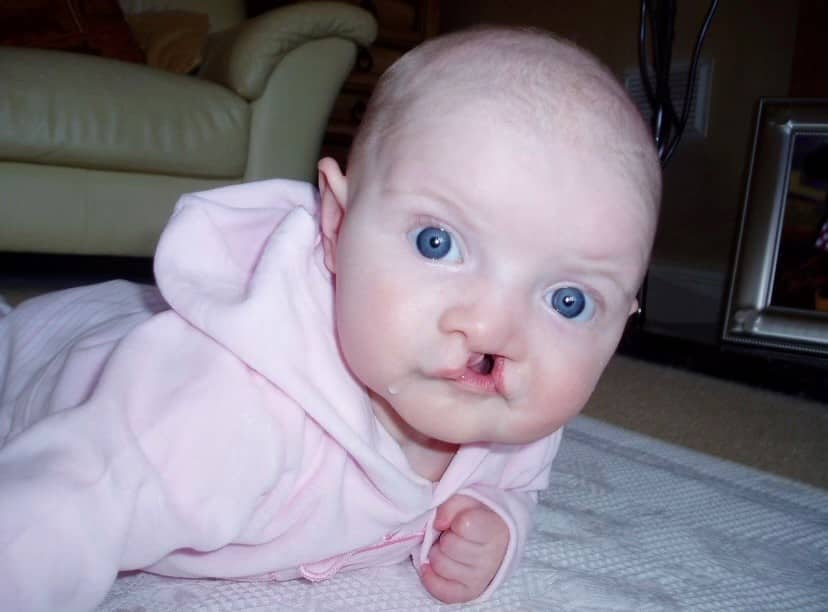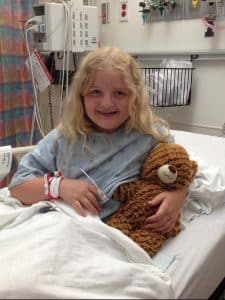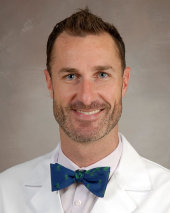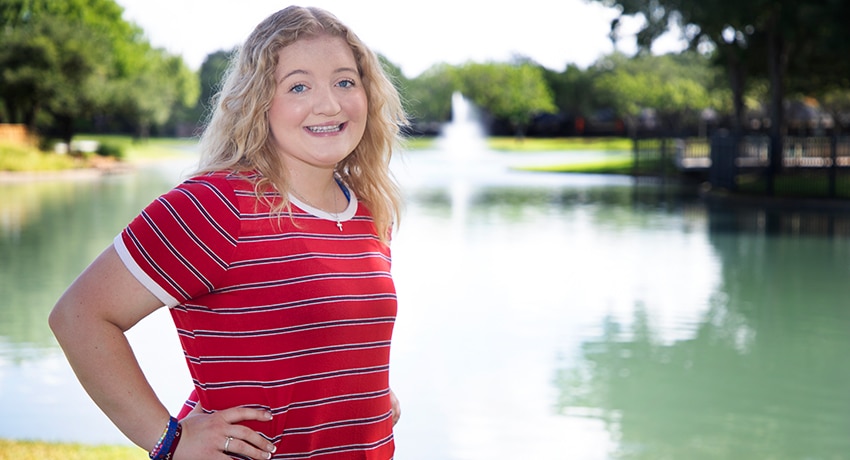From time to time, Charlotte “Charlie” Brown will be asked questions about her face and why it’s a little different. Although that may seem off-putting to some, she sees it as an opportunity to educate and spread awareness about cleft conditions.
“It’s nothing to hide. I feel like it could make some people insecure, but I’m proud of it,” she explained. “It’s made me unique, and I want to share that with other people.”
Originally from Scotland, Charlie’s diagnosis of bilateral palate and single cleft lip caught her parents off guard because of the complete lack of family history of the disorder. As an infant, she underwent multiple surgeries to repair her palate and lip. For years, everything remained stable and her family relocated to Texas.

Charlie’s surgical journey started back up again in 2014 at the age of nine. Under the care of the Texas Cleft-Craniofacial Team at UT Physicians and the now-retired John F. Teichgraeber, MD, pediatric plastic surgeon, it was time for another major procedure — a bone graft repair and plastic surgery.

“The surgery was pretty easy for me since I’ve had so many of them,” she recalled. “But the one thing I do remember vividly was almost missing out on a trip to Disney World because of the recovery process.”
At 17 years old, Charlie underwent her final surgery with Teichgraeber’s successor Matthew R. Greives, MD, director of the Texas Cleft-Craniofacial Team and associate professor and division director of pediatric plastic and reconstructive surgery at McGovern Medical School at UTHealth Houston.
“I had known Dr. T since I was a kid, but Dr. Greives is an awesome doctor,” said the teen. “I remember meeting him for the first time to discuss my upcoming rhinoplasty and I was so comfortable with him. He was great to talk with and prepared us in every way.”
Greives explained that often the final procedure in a cleft journey is cosmetic or functional, such as a rhinoplasty to repair the shape of the nose and improve breathing.

“It’s best to perform these final touchups once a patient is done growing,” said the surgeon. “I consider caring for Charlie an honor and an amazing opportunity to carry on Dr. T’s legacy.”
Recovery from her nasal reconstruction was bittersweet. On one hand, it meant the end of a very long health care journey, but on the other, graduation from a program filled with memories and bonds that would last a lifetime.
Knowing in her heart she wasn’t yet done with the Texas Cleft-Craniofacial Team, Charlie reached out to members of the staff to see if there was a way she could help other patients.
“Now that I’ve graduated, I can share my story with others,” she shared. “When you get to the age where you can be a positive influence and set an example to younger patients that everything will be ok — that’s making an impact on a child’s life.”
Greives believes that her desire to connect with other children going through their cleft journey is a special thing.
“Charlie has gone through this process every step of the way, knows what it takes to be a patient, and understands all the things little ones are scared of,” he said. “To have someone explain to you that while things may seem bad now, everything will be ok in the end — it’s amazing she can do that for our kids.”
Currently, Charlie is entering her last year of high school with big plans for her future. Inspired by her own experiences and the wonderful people she encountered during her childhood, she plans to pursue a career in the medical field.
“I’m thinking I’d like to do something in pediatrics or work with a cleft team,” she said. “I know how much of an impact the Texas Cleft-Craniofacial Team has had on me, and a chance to be that for someone else would be awesome.”
For more information on the Texas Cleft-Craniofacial Team or to request an appointment, visit their page.


